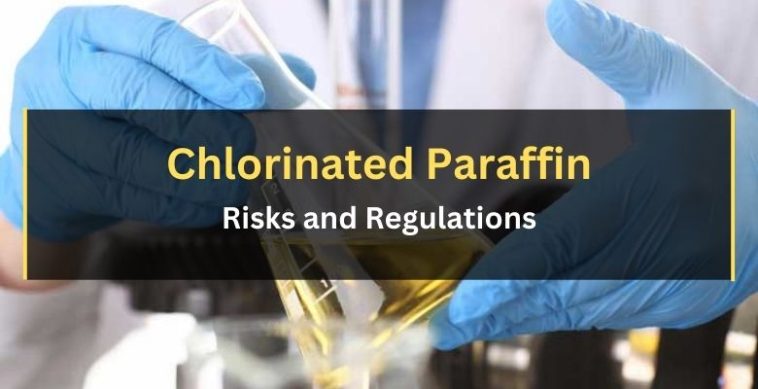Chlorinated paraffin is a type of organic compound that is used in a variety of industrial applications. It is a colorless or yellowish liquid that is made by chlorinating paraffin wax, which is derived from petroleum. It is commonly used as a flame retardant in plastics, rubber, and textiles, as well as in metalworking fluids, lubricants, and other industrial products. While it has many useful applications, it is also known to have negative environmental impacts.
The purpose of this blog post is to explore the environmental risks associated with chlorinated paraffin and the regulations that have been put in place to mitigate these risks.
Environmental Risks Associated with Chlorinated Paraffin
There are several environmental risks associated with it. One of the main risks is its toxicity to aquatic life. Chlorinated paraffin is known to be toxic to fish, crustaceans, and other aquatic organisms. When it enters waterways, it can accumulate in the tissues of these organisms, potentially causing harm to both the individual and the ecosystem as a whole.
In addition to aquatic toxicity, it may also have negative impacts on human health. Exposure to chlorinated paraffin has been linked to respiratory problems, skin irritation, and other health issues. Workers in industries that use it, such as metalworking and plastics manufacturing, are at a higher risk of exposure.
It can enter the environment in several ways. Industrial discharge is one common source, as it is often used in manufacturing processes that involve water. Accidental spills can also occur during the transport or storage of chlorinated paraffin, which can contaminate soil and water.
Regulations on Chlorinated Paraffin Use and Disposal
Regulations have been put in place in various regions around the world to mitigate the environmental risks associated with chlorinated paraffin. For example, the European Union’s REACH regulation restricts the use of it in certain applications, such as in articles intended for use by children. The United States Toxic Substances Control Act also regulates the use and disposal of chlorinated paraffin.
These regulations aim to limit the amount of chlorinated paraffin that enters the environment by restricting its use and requiring proper disposal. In some cases, the use of it is completely banned.
Alternatives to Chlorinated Paraffin
In recent years, there has been growing interest in finding alternatives to chlorinated paraffin that are less harmful to the environment. One such alternative is phosphate esters, which are also used as flame retardants in plastics but are considered to be less toxic than it. Other alternatives include halogen-free flame retardants, which do not contain chlorine or other halogens that can be harmful to the environment.
However, these alternatives are not without their drawbacks. For example, some alternative flame retardants may not be as effective as chlorinated paraffin and may require higher concentrations to achieve the same level of flame resistance. And additionally, the production of some alternative flame retardants can also have negative environmental impacts.
So, it is advised to buy it from the leading and renowned Chlorinated Paraffin Manufacturers because it is less harmful to the environment.
Case Studies of Chlorinated Paraffin Contamination
There have been several high-profile cases of it in recent years, such as the contamination of the Rhine River in Europe. These case studies can provide valuable insights into the environmental impacts of chlorinated paraffin and the challenges of cleaning up contaminated sites.
The Role of Industry in Addressing Environmental Risks
While regulations play an important role in mitigating the environmental risks of chlorinated paraffin, it is also important for industries to take responsibility for reducing their impact on the environment. It could include implementing sustainable manufacturing practices, investing in research and development of safer alternatives, and properly disposing of hazardous materials.
Emerging Technologies for Chlorinated Paraffin Remediation
In cases where chlorinated paraffin has already contaminated soil or water, remediation technologies may be necessary to clean up the site. And there are several emerging technologies for it, such as bioremediation and phytoremediation, which use microorganisms or plants to break down chemicals.
Public Awareness and Education on Environmental Risks
Public awareness and education are key components of addressing the environmental risks of chlorinated paraffin and other hazardous chemicals. It could include outreach to industries, policymakers, and the general public to raise awareness of the risks and encourage the adoption of safer alternatives and practices.
Conclusion
Finally, while chlorinated paraffin has many useful applications, it also poses significant environmental risks. Regulations have been put in place in various regions around the world to mitigate these risks, but finding suitable alternatives remains a challenge. As industries continue to seek safer and more sustainable flame retardant options, it is important to weigh the pros and cons of each option and prioritize environmental safety and sustainability.
It is also important for individuals and businesses to take responsibility for properly disposing of chlorinated paraffin and other hazardous materials. It can help to prevent accidental spills and reduce the amount of these chemicals that enter the environment.




